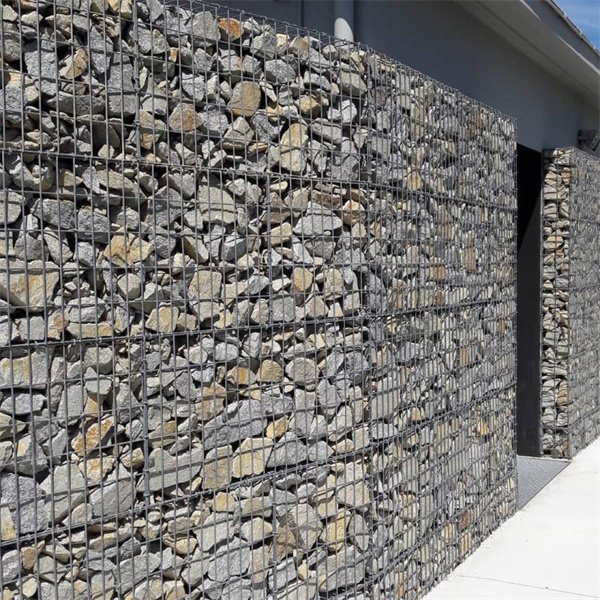Dec . 11, 2024 23:53 Back to list
china gabion lacing wire
The Importance of Gabion Lacing Wire in Modern Construction
Gabion structures have gained significant attention in recent years for their versatility and effectiveness in various applications such as erosion control, landscaping, and even architectural design. At the heart of these structures is the often-overlooked gabion lacing wire, a crucial component that ensures the integrity and longevity of gabion systems. This article delves into the significance of gabion lacing wire and its role in modern construction.
What is Gabion Lacing Wire?
Gabion lacing wire is a type of wire used to secure gabion baskets, which are essentially wire mesh containers filled with rock, concrete, or other materials. These baskets are commonly used for retaining walls, riverbank stabilization, and noise barriers. The lacing wire is threaded through the mesh of the gabion and twisted to hold the elements together tightly. This process not only aids in maintaining the structural shape of the baskets but also helps prevent the escape of the fill material.
Material and Specifications
Gabion lacing wire is typically made from high-quality steel, either galvanized for corrosion resistance or PVC-coated for additional protection against environmental elements. The wire usually comes in various diameters; commonly used sizes range from 1.2 mm to 3.4 mm, depending on the specific requirements of the gabion application. Its strength and durability are essential in ensuring that the resulting structures can withstand various stresses, including pressure from the fill material, weather impacts, and environmental changes.
Applications of Gabion Lacing Wire
One of the primary uses of gabion lacing wire is in the creation of retaining walls. Engineers and builders utilize gabion baskets filled with stones along slopes or embankments to prevent erosion and provide stability. The lacing wire plays a vital role in keeping these baskets intact, allowing them to withstand the weight of the fill materials and external forces.
china gabion lacing wire

In landscaping, gabion structures offer an aesthetic appeal while serving functional purposes. Garden walls, benches, and decorative features can all be constructed using gabions. Lacing wire ensures that the desired shapes and patterns are preserved, enhancing both the visual and structural integrity of the designs.
Another critical application is in flood control and riverbank stabilization. Gabions are often employed to create barriers that redirect water flow and absorb the impact of waves, preventing soil erosion and property damage. The lacing wire is an essential element in these constructions as it secures the baskets against high water forces, ensuring they remain in place during extreme weather conditions.
Benefits of Using Gabion Lacing Wire
The use of gabion lacing wire offers several benefits. First, it significantly enhances the durability of gabion structures by ensuring that the filled baskets remain securely closed. This security is crucial in preventing displacements that can occur due to erosion or excessive force.
Second, gabion lacing wire allows for flexibility in construction. Adjustments can easily be made during installation, ensuring that the gabion structures align properly with the intended design. This adaptability is particularly beneficial in projects where the terrain presents unique challenges.
Third, the cost-effectiveness of gabion lacing wire cannot be overlooked. Gabion structures, combined with effective lacing techniques, can yield significant savings compared to traditional construction methods. They require less labor and materials while providing robust solutions for engineering challenges.
Conclusion
Gabion lacing wire may be a small component in the grand scheme of construction, but its importance cannot be underestimated. Its role in securing gabion baskets ensures that these structures are not just functional but also capable of withstanding the rigor of environmental challenges. As builders and engineers continue to explore innovative designs and sustainable practices, gabion lacing wire will remain at the forefront of modern construction solutions. Whether for aesthetic landscaping, effective erosion control, or durable retaining walls, this humble wire is a testament to the power of simple materials in creating lasting structures.
-
Why PVC Coated Gabion Mattress Is the Best Solution for Long-Term Erosion Control
NewsMay.23,2025
-
Gabion Wire Mesh: The Reinforced Solution for Modern Construction and Landscape Design
NewsMay.23,2025
-
Gabion Wall: The Flexible, Seismic-Resistant Solution for Modern Landscaping and Construction
NewsMay.23,2025
-
Gabion Wall Solutions: The Durable, Decorative, and Affordable Choice for Every Landscape
NewsMay.23,2025
-
Gabion Basket: The Durable and Flexible Alternative to Traditional Retaining Walls
NewsMay.23,2025
-
Gabion Basket: The Proven Solution for Slope Stability and Flood Control
NewsMay.23,2025
-
Versatility of Chain Link Fence Gabion
NewsMay.13,2025






